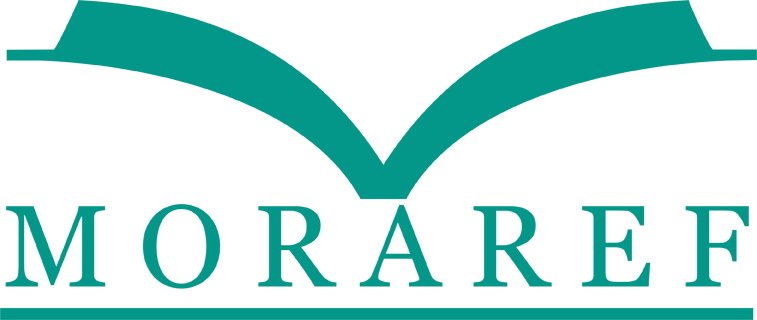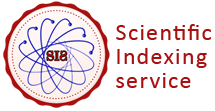FAKTOR-FAKTOR PENYEBAB RAMPAN KARIES PADA SISWA TK BUDI UTAMI DI DAERAH PESISIR PANTAI DESA BERAHAN WETAN KECAMATAN WEDUNG KABUPATEN DEMAK
Abstract
TITLE
THE FACTOR OF CAUSING RAMPANT CARIES IN THE KINDERGARTEN STUDENTS IN THE COASTAL AREAS WEDUNG, DEMAK
ABSTRACT
Baby bottle caries is a dental disease that attacks the hard tissues of tooth that spreads rapidly and it’s common in primary teeth. This study aims to determine the factors that cause baby bottle caries in Budi Utami Kindergarten students in coastal areas of Berahan Wetan Village Wedung District Demak Regency 2016.
This type of research is quantitative descriptive case study method. Data taken by direct examination of the baby bottle caries, the pH of saliva and plaque index PHP-M, as well as the provision of a questionnaire and a questionnaire based on the theory of H.L. Bloom approach which consist by environmental factors, behavior, health care and heredity. Priority issues using odd ratiotest data analysis showed that the practical factor (OR value=16,25), attitude factor (OR value=15,00) and knowledge factor (OR value=9,3) are the most dominant causative factors to the baby bottle caries problem.
The results showed that the salivary pH value all of respondents were in acid criteria (pH <7.0) and 57% respondents have a bad plaque index score categories. The time factor showed 57% of respondents are in the bad category. Knowledge factors, there are still 48% of respondents who are knowledgeable with the bad category. Attitude factors, as much as 61% of respondents already have a good attitude. Practices factors, 100% of respondents do not brush the teeth before going to bed at night and do not check their teeth regularly. Environmental factors, found 83% of respondents have the habit of toothbrushing only when having take a bath. Health services factors, 100% of respondents had never obtained the treatment of cavities and did not get dental health education. Heredity, found 52% of respondents have a fragile teeth and 26% of respondents have a crowding tooth structure. The alternative solutions to problems are by minimize baby bottle consumtion, cariogenic food dietary, brushing teeth together at school, topical application of fluoride or CPP-ACP, dental health education for students and school cadres training.Keywords
Full Text:
PDFReferences
Amerongen, A.V.N., Michels, L.F.E., Roukema, P.A., Veerman, E.C.L., 1991, Ludah danKelenjar Ludah Arti Bagi Kesehatan Gigi, Abyono R, editor., Gadjah Mada University Press, Yogyakarta.
Hanafi, M., 2012, Faktor-faktor yang Mempengaruhi Tingginya Angka Karies Gigi pada Siswa SD Wedung 1 di Daerah Pesisir Pantai Desa Wedung Kecamatan Wedung Kabupaten Demak Tahun 2012, Studi Kasus, Politeknik Kesehatan Semarang, Semarang.
Forssten, S., Bjorklund, M., Ouwehand, 2010, Streptococcus mutans, Caries and Simulation Models, Journal, Kantvik, Finland.
Hasanah, I., 2014, Kadar Ion Fosfat dalam Saliva Buatan setelah Aplikasi CPP-ACP, Skripsi, Fakultas Kedokteran Gigi Universitas Jember, Jember.
Karina, R., 2015, Pengaruh Ekstrak Bawang Putih (Allium sativum) terhadap Pertumbuhan Bakteri Streptococcus mutans secara in vitro, Laporan Penelitian, UIN Syarif Hidayatullah, Jakarta.
Kidd, E.A.M., Bechal, S.J., 1991, Dasar-dasar Karies Penyakit danPenanggulangannya, EGC, Jakarta.
Kusumasari, N., 2012, Pengaruh Larutan Kumur Ekstrak Siwak (Salvadora persica) terhadap pH Saliva, Karya Tulis Ilmiah, Fakultas Kedokteran Universitas Diponegoro, Semarang.
Machfoedz, I., 2008, Menjaga Kesehatan Gigi dan Mulut Anak-anak dan Ibu Hamil, Fitramaya, Yogyakarta.
Maryati, 2011, Faktor-faktor yang Menyebabkan Terjadinya Karies pada Anak Usia 2-5 Tahun di Wilayah RW 20 Kelurahan Meteseh Kecamatan Tembalang Kota Semarang Tahun 2011, Studi Kasus, Poltekkes Kemenkes Semarang, Semarang.
Maulani, C., 2005, Kiat Merawat Gigi Anak, PT Elek Media Komputindo, Jakarta.
Moniruddin., Hamida, B., Nahar, K., 2010, Actinomycosis: an Update, Journal, Vol. 22, No. 1, Dhaka.
Notoatmodjo, S., 2002, Dasar-dasar Metodologi Klinik Edisi 2, Binarupa Aksara, Jakarta.
Rahman, P.L., Yusuf, E.A, 2012, Gambaran Pola Asuh Orangtua pada Masyarakat Pesisir Pantai, Jurnal, Universitas Sumatera Utara, Medan.
Robbani, 2013, Perbedaan Kadar Kalsium Saliva Antara Anak Bebas Karies dan Penderita Karies Rampan Usia 4 - 5 Tahun (Kajian di PAUD Cempaka Sewon Bantul), Skripsi, Universitas Gadjah Mada, Yogyakarta.
Made Ayu Lely Suratri, Tince A Jovina, dan Indirawati Tjahja N, 2017, Pengaruh (pH) Saliva terhadap Terjadinya Karies Gigi pada Anak Usia Prasekolah EFFECTS (pH) OF SALIVA BY DENTAL CARIES OCCURRENCE IN PRE-SCHOOL CHILDREN AGEBuletin Penelitian Kesehatan, Vol. 45, No. 4, Desember 2017: 241 - 248
White, Valerie., 2008, Breastfeeding and The Risk of Early Childhood Caries. Evidence-Based Dentistry, Journal: Evidence-based Dentistry, Vol.9, Issue 3, British University, Columbia
DOI: https://doi.org/10.31983/jkg.v5i2.3858
Article Metrics
Refbacks
- There are currently no refbacks.
| View My Stats |











.png)


.png)
.png)








